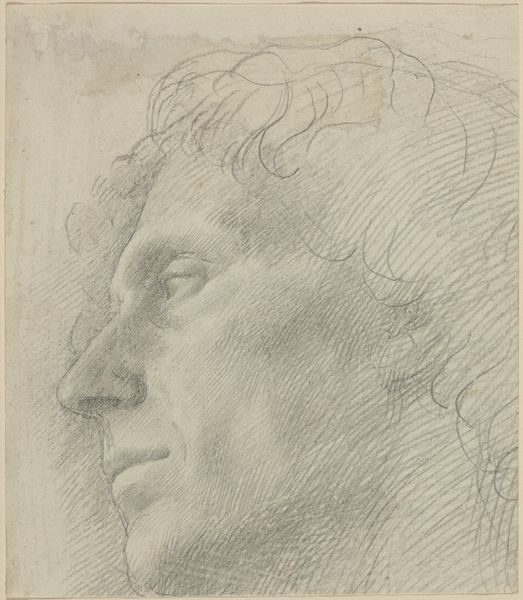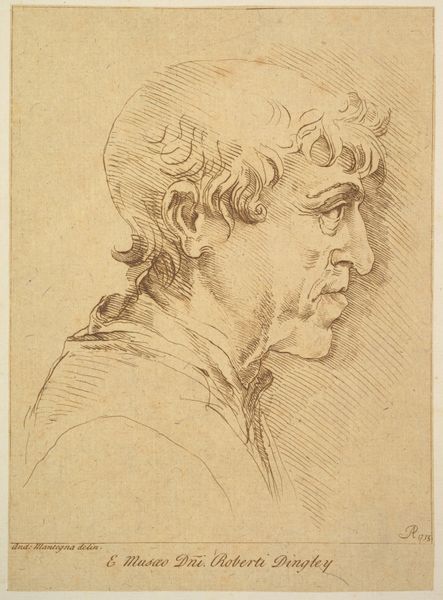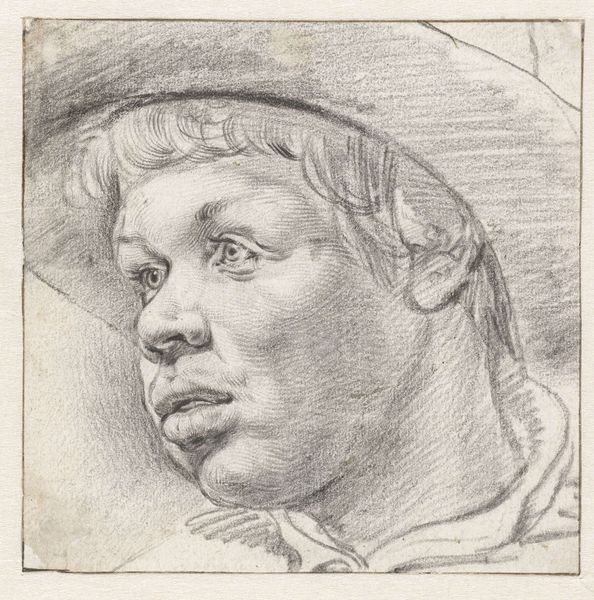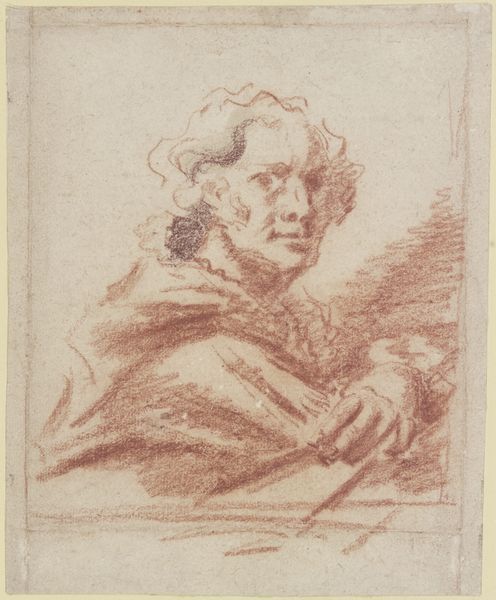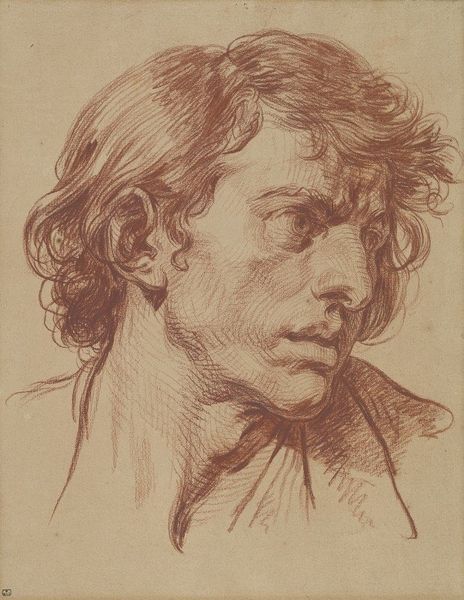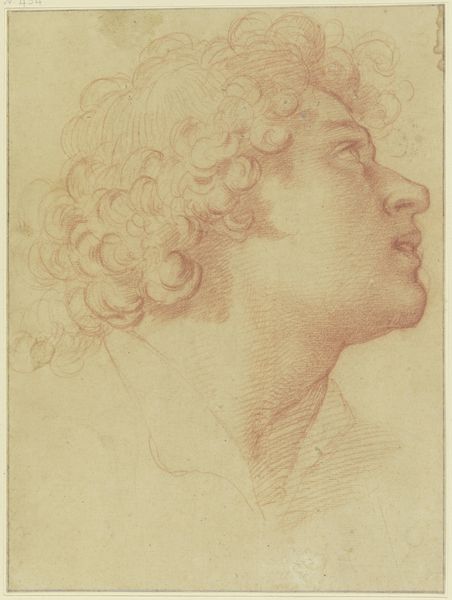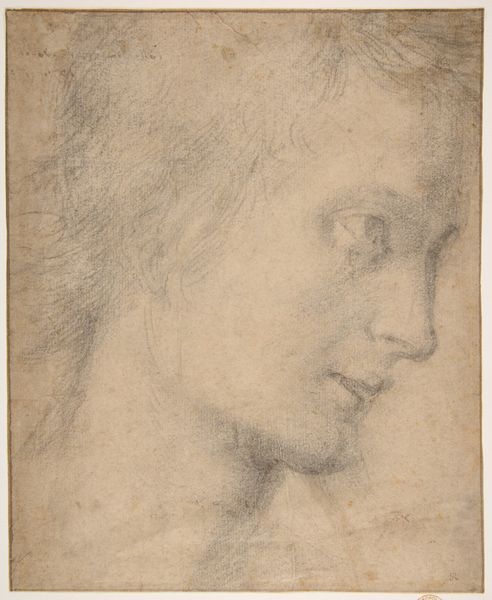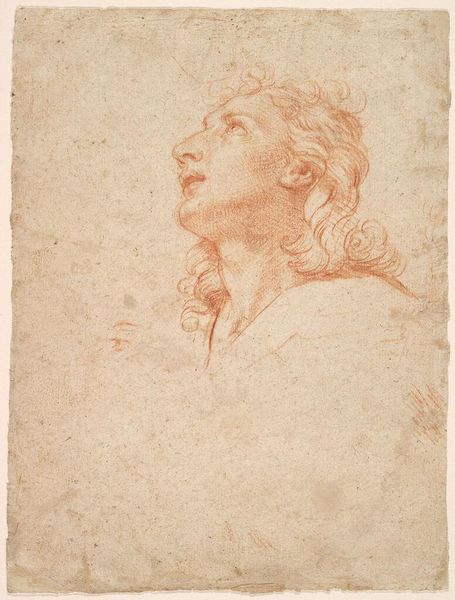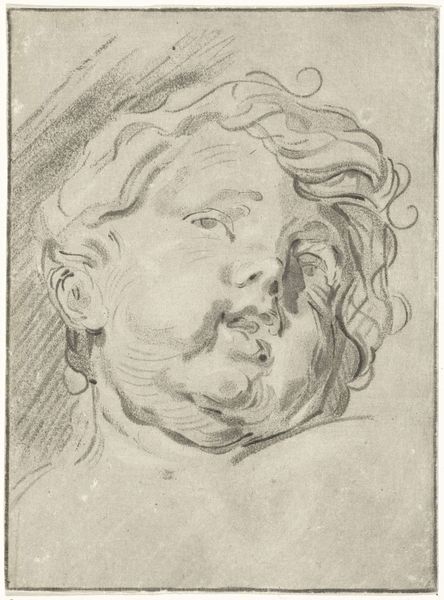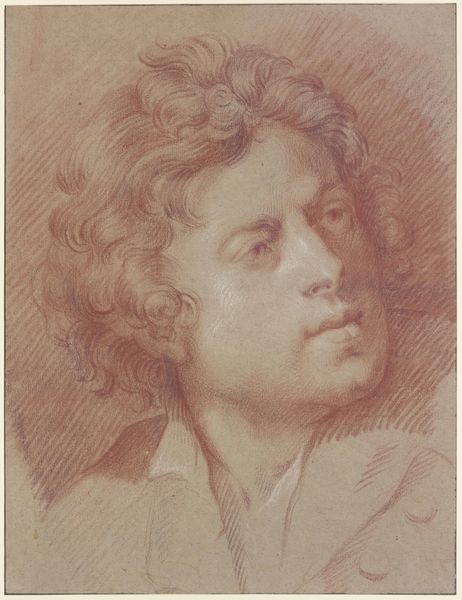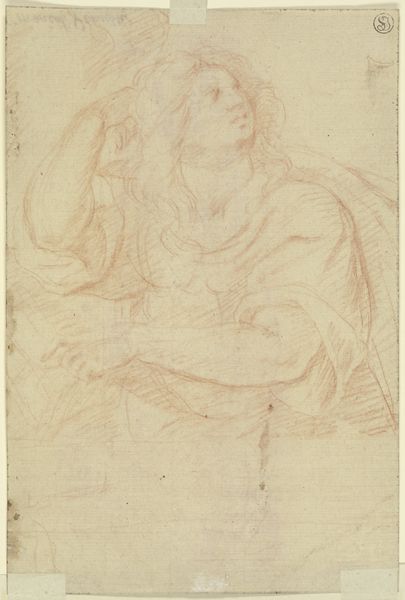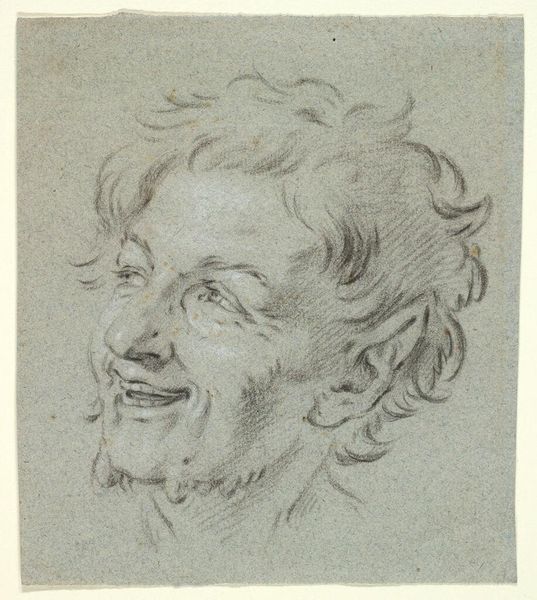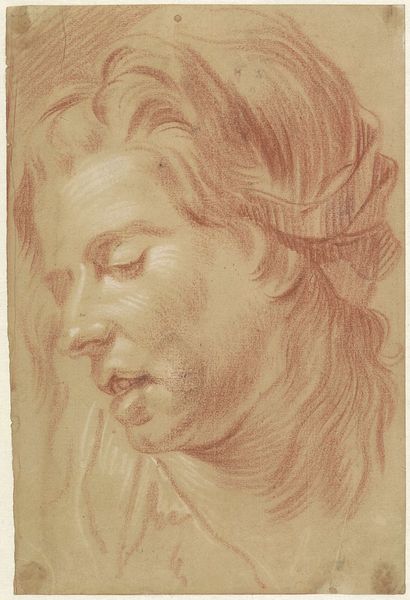
#
facial expression drawing
#
pencil sketch
#
charcoal drawing
#
portrait reference
#
pencil drawing
#
coffee painting
#
animal drawing portrait
#
portrait drawing
#
portrait art
#
fine art portrait
Dimensions: height 302 mm, width 190 mm
Copyright: Rijks Museum: Open Domain
Curator: This drawing by Hans Troschel is entitled “Manskop met omhooggerichte blik,” or "Man's Head with Upward Gaze," and it's dated sometime between 1595 and 1628. What do you make of it? Editor: The first thing that strikes me is the intense chiaroscuro effect achieved purely through line work. There's a raw quality to it, as though Troschel were trying to capture a fleeting emotion. Curator: It’s a striking example of the intense study of human anatomy and expression that characterized much of the artistic production of the late 16th and early 17th centuries. Consider the patronage system at the time. Artists like Troschel were often commissioned to create such drawings for educational or scientific purposes. Editor: Absolutely, and the upward gaze contributes significantly to the drawing's narrative. There is a sense of contemplation or perhaps even religious ecstasy implied. I am drawn to the textural interplay; see the soft, almost blurry lines of the face in contrast with the sharper, more defined lines indicating the hair and neck. Curator: That gaze might not be indicative of any higher power at all! This type of work allowed for artists and their patrons to investigate human psychology more generally during a period where such intellectual freedoms were becoming increasingly valued within intellectual circles. Think of the scientific and philosophical inquiries gaining prominence at this time. Editor: I see what you mean, but still, the sheer drama Troschel creates using just line and shadow transcends any purely scientific objective. There is a visceral feeling here. Curator: Perhaps that is because the rise of printmaking during this era also gave artists the chance to disseminate knowledge, to promote themselves, and critique institutions that had shaped art to that point. The artist as public intellectual—something increasingly valued in this era—finds purchase in these “anatomical” drawings! Editor: That gives me a richer appreciation of what Troschel might have been hoping to achieve. I initially saw the study of forms but now appreciate its more revolutionary intent! Curator: Precisely. It is fascinating how form and social history meet in an artwork like this.
Comments
No comments
Be the first to comment and join the conversation on the ultimate creative platform.
